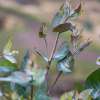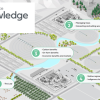
Plantation planning: The key to a successful plantation
Posted 10 May 2024
Plantation planning Species, sites and planting On-farm benefits Tree Alliance
Growing trees is a long-term project. To make sure your investment pays off, it’s important to have a plan. Seeking advice early in the process can save a lot of work and expense in the long run. Consider where, how and why you are going to plan trees – and make a plan to suit your goals.
We spoke to Alex Tabor, ActivAcre's Land Assessment Manager, and Peter Volker, forestry specialist, about why planning is a vital step.
Why trees?
Planning to grow trees is not a one-size-fits all approach. Farmers can design their plantations according to their individual goals and to maximise the benefits of trees on farms.
Alex Tabor is the Land Assessment Manager for ActivAcre and has worked in agroforestry for two decades. Peter is a forestry specialist with over 35 years of forestry experience in Tasmania. They are passionate about trees in farming landscapes and say planning is the key to unlocking multiple benefits.
‘We need to stop thinking of forestry as competition to agriculture,’ says Alex. ‘There’s an ongoing conversation that forestry is against agriculture. There’s talk of losing good land to trees, that trees will shade out the grass, that trees are inconvenient.
‘But trees in the right place actually strengthen farming operations. They are the backbone to everything farmers want to do on their land.
‘Tress significantly improve productivity across the whole farm. Your property has more value because of trees, you can slow down the wind with trees, there’s biodiversity. There’s just so many benefits to having trees.
‘Trees are an alternative source of income,’ says Peter. ‘They also provide shelter for animals, increased pasture production, better crop rotation. There’s research to show that there’s a lot of good reasons to grow trees.
‘But you have to put some work into trees every year, especially if you want to grow a commodity product. Pay attention to them and be prepared to manage them. That’s when you’ll get a good result.’

Plan for tree planting
There are many steps to planning a plantation. Alex and Peter say it’s important to start with your objectives and be sure to think of the legalities early on. Then, it’s about making a plan according to your needs and your land.
‘You have to get really clear in your mind what you want to do,’ says Peter. ‘If you want to do anything at scale, you’ve got to get the planning right.
‘For example, species selection depends on where you are and what you want to do. If you want to get involved in commercial wood production or carbon, you’re looking at species such as radiata pine, Eucalyptus nitens or Eucalyptus globulus – among many other commercial species options.
‘You also have to think about how the plantation is going to be harvested in the future. If it’s near a steep slope or major watercourse or highly erodible soils, you have to consider that. You also have to consider the operational side, like how you are going to harvest, who is going to harvest, how much is it going to cost?’
‘You have to understand early on whether or not you can plant trees,’ adds Alex. ‘Before you start planting, you may need a Forest Practices Plan. Or if you want to include carbon, your project must be registered before you start any site prep or plant.
‘If you overlook that, you can get halfway through a project and then realise you can’t legally do what you’re planning to do. So you should get your ducks lined up first.
‘After the legalities, you can then start thinking about what trees you want. Or really, what problems you are trying to solve with trees. With forestry, you need to look at the bigger picture. Look at the problems your farm has and the options of how to solve them.
‘Because trees can solve or help mitigate so many issues. Tree plantings can go wrong when they’re not targeted.’

Get better results with advice
Farmers can plant trees with or without help. There are many tasks throughout a plantation’s lifecycle that farmers can do without professional support. But during the planning process, getting professional advice can save money, time and effort in the long run.
A forester can help map your property, discuss your goals and create a plan that will make sure your investment in trees is a good one.
‘If you want to grow a plant in your garden, you go to a nursery man or a horticulturalist who can give you some advice,’ says Peter, ‘so I’d say to same thing to a farmer who wants to plant trees.
‘Go and speak to a forester who has some expertise in this area. Most farmers I know who have done well with trees have had some sort of assistance.’
‘Good upfront planning can avoid risks,’ says Alex. ‘Forestry is an art and a science. The planning and establishment part is the brain work.
‘So if you haven’t got a long history of forestry but you like the idea of trees, you can avoid mistakes by asking a forester to come and help. Foresters can come to your farm and bring their laptop and start to draw up plans for you.
‘They can give you a roadmap of how to do it. It’s not particularly expensive and some advice is free. There’s heaps of information out there. There’s lots of people who consult and will give really good advice.’
‘Every farm should have trees in some form. It’s never going to be a bad decision.
‘The best time to plant a tree is today,’ adds Peter, ‘because every day you put it off is another day you missed out on that opportunity.’
Find out more about planning for tree planting with the Tree Alliance knowledge hub. Visit www.treealliance.com.au.






